ELAR 3.1
Developing and sustaining foundational language skills: listening, speaking, discussion, and thinking--oral language. The student develops oral language through listening, speaking, and discussion. The student is expected to:
- (1) Author's purpose and craft: listening, speaking, reading, writing, and thinking using multiple texts. The student uses critical inquiry to analyze the authors' choices and how they influence and communicate meaning within a variety of texts. The student analyzes and applies author's craft purposefully in order to develop his or her own products and performances. The student is expected to:
- (2) explain the author's purpose and message within a
text;
- (A) explain how the use of text structure contributes to the author's purpose;
- (B) explain the author's use of print and graphic features to achieve specific purposes;
- (C) describe how the author's use of imagery, literal and figurative language such as simile, and sound devices such as onomatopoeia achieves specific purposes;
- (D) identify the use of literary devices, including first- or third-person point of view;
- (E) discuss how the author's use of language contributes to voice; and
- (F) identify and explain the use of hyperbole.
- (G) Composition: listening, speaking, reading, writing, and thinking using multiple texts--writing process. The student uses the writing process recursively to compose multiple texts that are legible and uses appropriate conventions. The student is expected to:
- (3) plan a first draft by selecting a genre for a
particular topic, purpose, and audience using a range of strategies such as
brainstorming, freewriting, and mapping;
- (A) develop drafts into a focused, structured, and coherent piece of writing by:
- (B) organizing with purposeful structure, including an
introduction and a conclusion; and
- (i) developing an engaging idea with relevant details;
- (ii) revise drafts to improve sentence structure and word choice by adding, deleting, combining, and rearranging ideas for coherence and clarity;
- (C) edit drafts using standard English conventions, including:
- (D) complete simple and compound sentences with subject-verb
agreement;
- (i) past, present, and future verb tense;
- (ii) singular, plural, common, and proper nouns;
- (iii) adjectives, including their comparative and superlative forms;
- (iv) capitalization of official titles of people, holidays, and geographical names and places;
- (v) adverbs that convey time and adverbs that convey manner;
- (vi) prepositions and prepositional phrases;
- (vii) pronouns, including subjective, objective, and possessive cases;
- (viii) coordinating conjunctions to form compound subjects, predicates, and sentences;
- (ix) punctuation marks, including apostrophes in contractions and possessives and commas in compound sentences and items in a series; and
- (x) correct spelling of words with grade-appropriate orthographic patterns and rules and high-frequency words; and
- (xi) publish written work for appropriate audiences.
- (E) Composition: listening, speaking, reading, writing, and thinking using multiple texts--genres. The student uses genre characteristics and craft to compose multiple texts that are meaningful. The student is expected to:
- (4) compose literary texts, including personal
narratives and poetry, using genre characteristics and craft;
- (A) compose informational texts, including brief compositions that convey information about a topic, using a clear central idea and genre characteristics and craft;
- (B) compose argumentative texts, including opinion essays, using genre characteristics and craft; and
- (C) compose correspondence such as thank you notes or letters.
- (D) Inquiry and research: listening, speaking, reading, writing, and thinking using multiple texts. The student engages in both short-term and sustained recursive inquiry processes for a variety of purposes. The student is expected to:
- (5) generate questions on a topic for formal and
informal inquiry;
- (A) develop and follow a research plan with adult assistance;
- (B) identify and gather relevant information from a variety of sources;
- (C) identify primary and secondary sources;
- (D) demonstrate understanding of information gathered;
- (E) recognize the difference between paraphrasing and plagiarism when using source materials;
- (F) create a works cited page; and
- (G) use an appropriate mode of delivery, whether written, oral, or multimodal, to present results.
- (H) listen actively, ask relevant questions to clarify information, and make pertinent comments;
- (I) follow, restate, and give oral instructions that involve a series of related sequences of action;
- (J) speak coherently about the topic under discussion, employing eye contact, speaking rate, volume, enunciation, and the conventions of language to communicate ideas effectively;
- (K) work collaboratively with others by following agreed-upon rules, norms, and protocols; and
- (L) develop social communication such as conversing politely in all situations.
- Free Plan
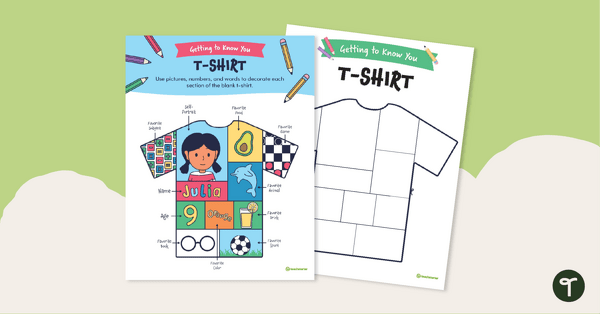
All About Me T-Shirt Design Template
Start the school year off with a bang with this All About Me t-shirt design template.
- Free Plan
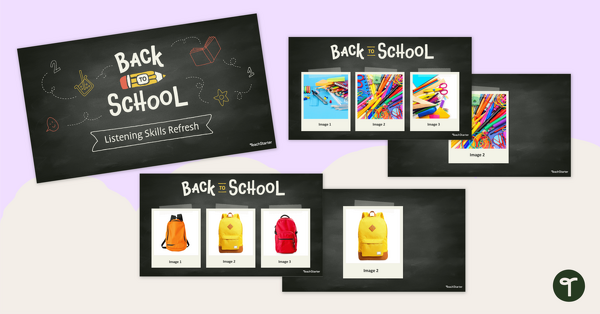
Back To School - Listening Skill Refresh Activity
Refresh student listening skills with a Back to School Listening Skill Refresh Slides and script.
- Plus Plan
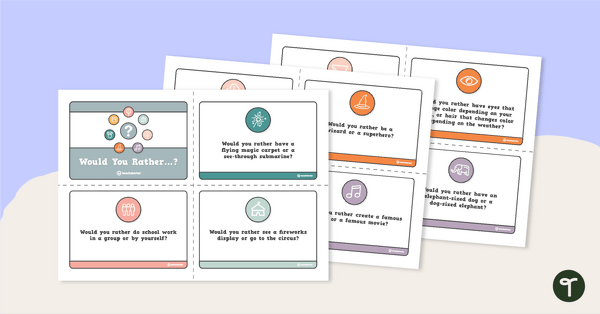
Would You Rather...? Question Cards
Would You Rather use this set of 31 question cards or eat a can of worms?
- Plus Plan
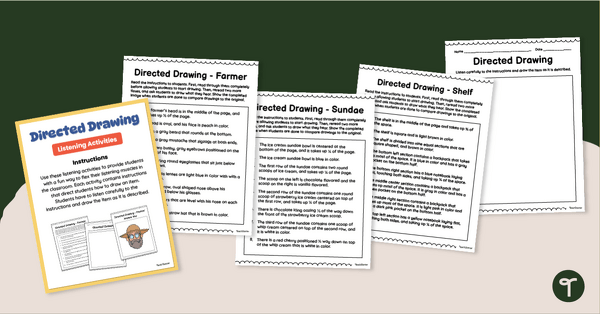
Listening-Drawing Activity Pack
Grab a Listening-Drawing Activity pack to fill in classroom downtime and help your students boost their listening skills.
- Free Plan
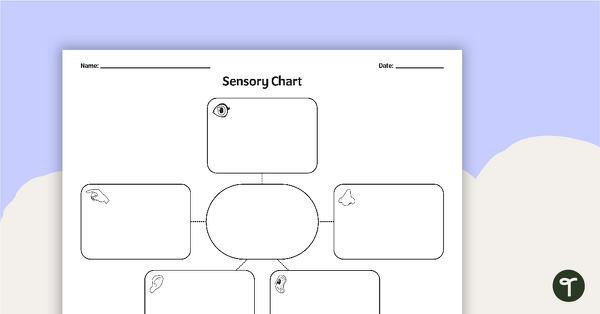
Sensory Chart Graphic Organizer
A graphic organizer for students to use when categorizing sensory details.
- Plus Plan
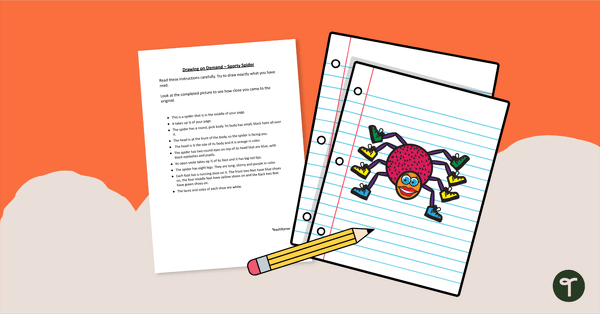
Directed Drawing Activity - How to Draw a Spider
Teach students how to draw a spider with a fun directed drawing activity for elementary students.
- Plus Plan
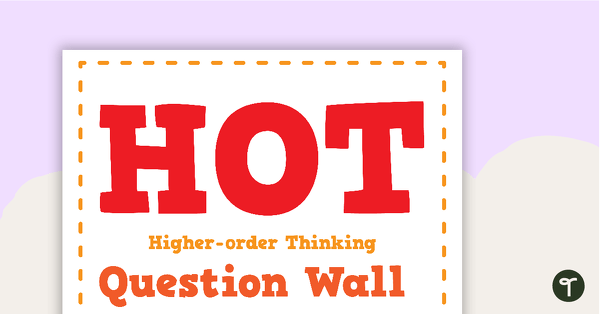
HOT (Higher Order Thinking) Questions Wall
Higher Order Thinking signage material and page borders to use in conjunction with Bloom's Taxonomy.
- Free Plan
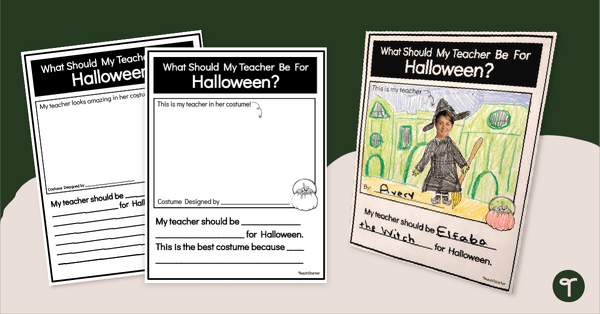
What Should My Teacher Be For Halloween? Writing Activity Pack
Have your students write to explain 'What Should My Teacher Be for Halloween?' with a printable differentiated Halloween writing activity pack.
- Plus Plan
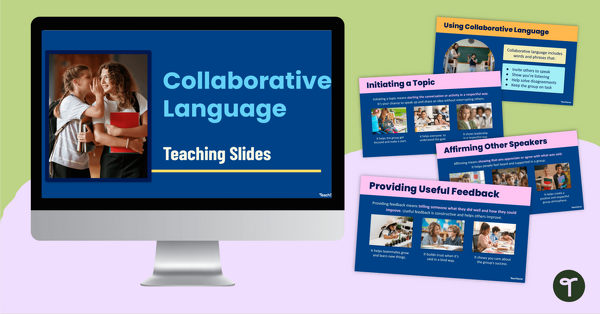
Collaborative Language Teaching Slides
Introduce collaborative language to your students with this easy-to-use slide deck that provides practical examples for developing confident, respectful communication.
- Plus Plan
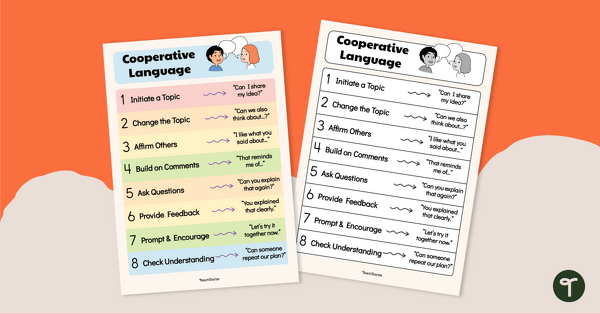
Cooperative Language Poster
Teach cooperative language to help students build essential communication skills with this easy-to-read classroom poster.
- Plus Plan
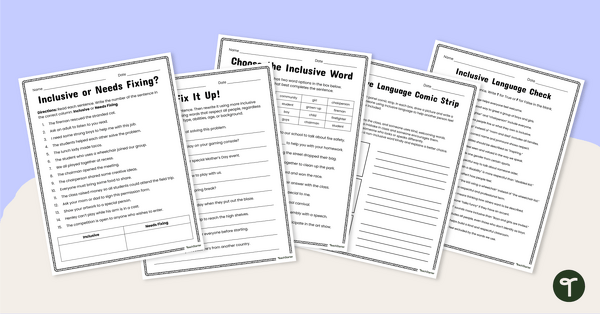
Using Inclusive Language Worksheet Pack
Teach your students about using inclusive language to promote respect and understanding in your classroom with these five engaging worksheets.
- Plus Plan
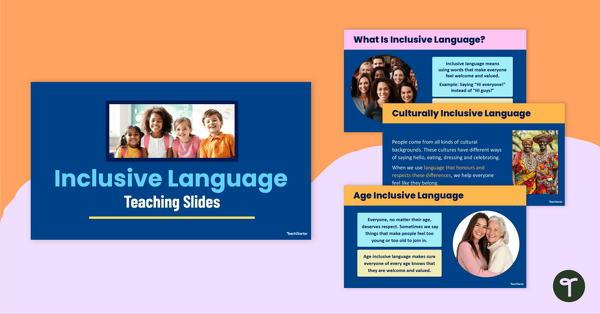
What Is Inclusive Language? Teaching Slides
Teach inclusive language to help your students embrace diversity with this engaging slide deck packed with examples and review activities.
- Plus Plan
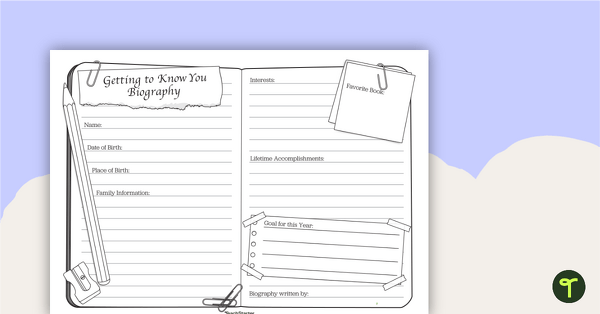
Student Biography Template - Get to Know Me Worksheet
Use this student biography template as a handy Get to Know Me Worksheet to kick off a new school year.
- Plus Plan
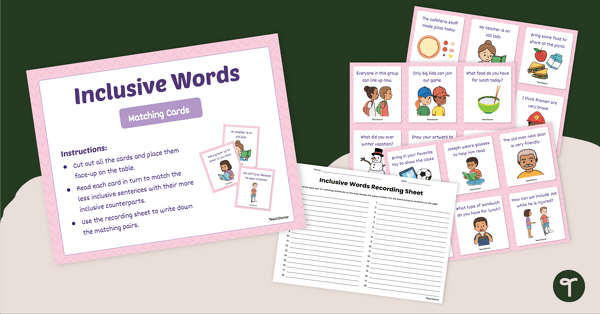
Inclusive Words Matching Game
Help your students recognize and replace exclusive language with respectful, inclusive words using this engaging matching card activity.
- Plus Plan
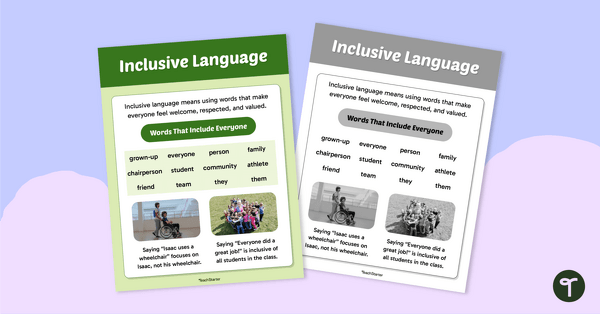
Inclusive Language Poster
Foster a welcoming classroom environment with an inclusive language poster that helps students understand respectful and inclusive communication.
- Plus Plan
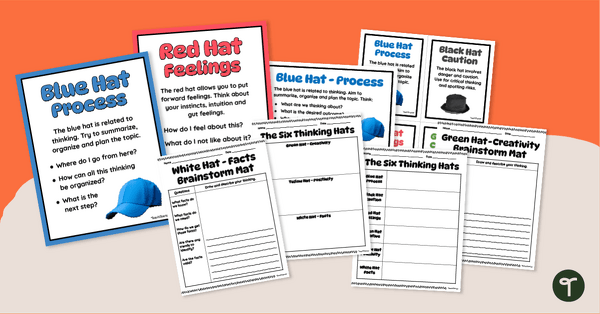
Six Thinking Hats Poster and Worksheet Pack
Promote deeper thinking with a set of De Bono’s Six Thinking Hats posters and worksheets.
- Plus Plan
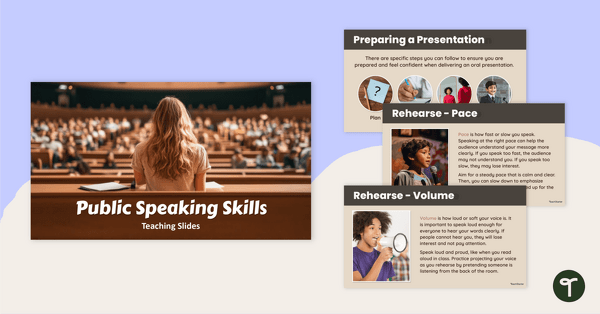
Public Speaking Skills Teaching Slides
Support students to develop public speaking skills like volume, pace, intonation and eye contact using this engaging slide deck designed for 3rd- and 4th-graders.
- Free Plan
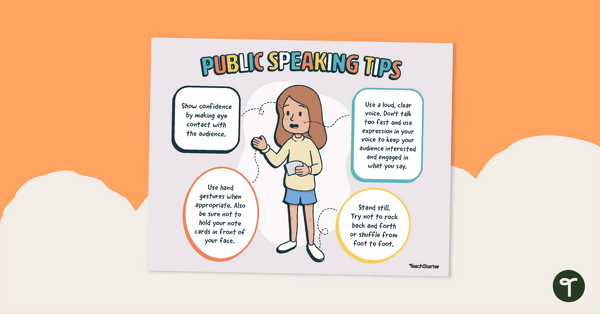
Public Speaking Tips For Students - Poster
Display this Public Speaking Tips for Students poster in your classroom when learning how to speak in front of peers.
- Plus Plan
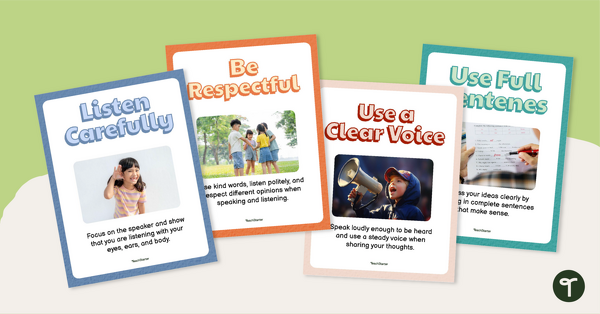
Speaking and Listening Rules Display Poster Set
Help students with speaking and listening rules in the classroom by displaying these simple and concise set of posters.
- Free Plan

Speaking Skills Assessment Checklist
Help students take ownership of their communication skills with this speaking skills checklist.
- Plus Plan
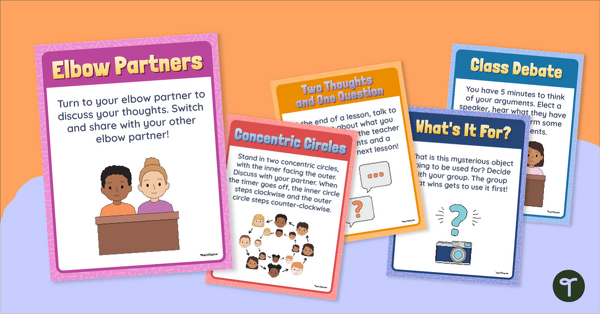
Student-Led Small Group Discussion Strategies Posters
Remind your students of a variety of student-led discussion strategies with this set of 8 posters.
- Plus Plan
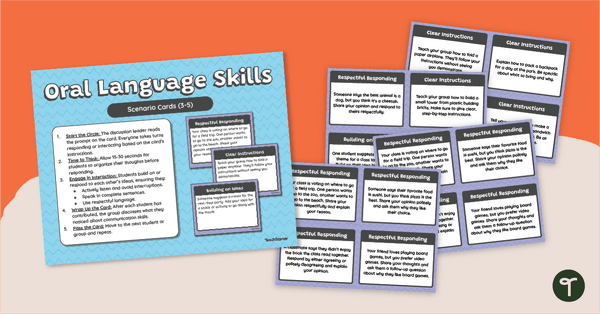
Daily Oral Language Task Cards (3-5)
Use Daily Oral Language prompts to boost your Grade 3 through Grade 5 students' communication abilities.
- Plus Plan
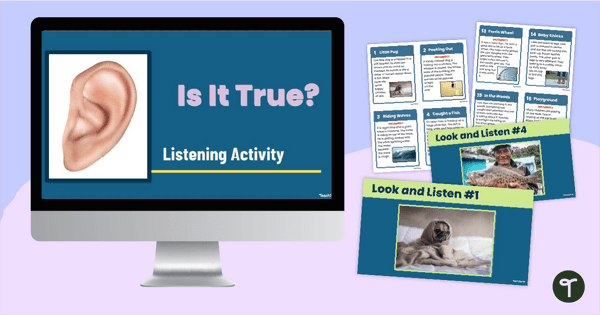
Is It True? Active Listening Activity
Improve listening skills in the classroom with an engaging 'Is It True?' Active Listening Activity.
- Plus Plan
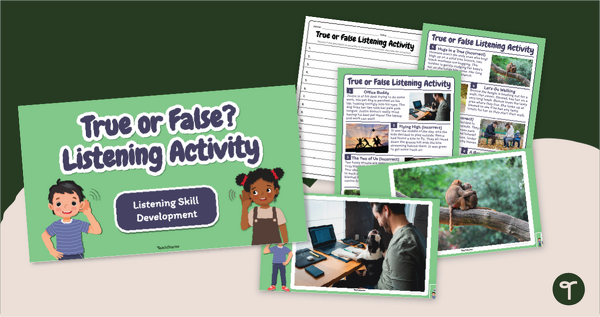
True or False? Active Listening Exercises
Improve listening skills in the classroom with an engaging True or False Active Listening Activity.
- Free Plan
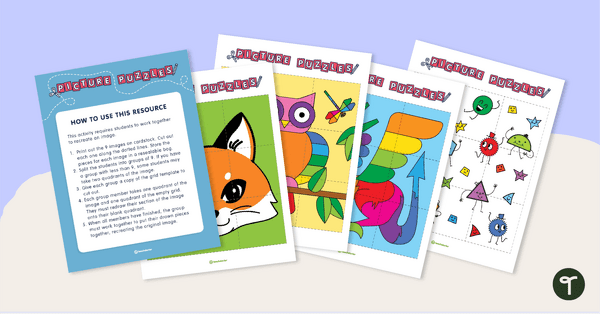
Picture Puzzles - Team Building Activities
A set of 10 picture puzzles to use as a team-building activity.
- Plus Plan
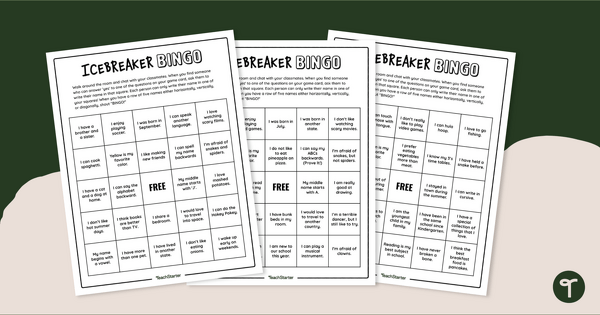
Icebreaker Bingo
Kick off a new school year with a getting-to-know-you icebreaker game!
- Plus Plan
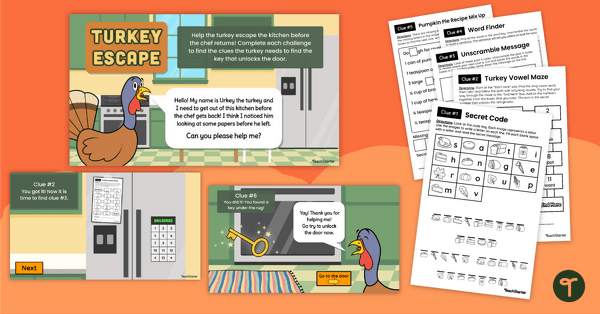
Thanksgiving Escape Room - Escape the Oven!
Help Urkey the Thanksgiving turkey escape the clutches of the terrible chef who wants to cook him with a fun Thanksgiving Escape Game.
- Plus Plan
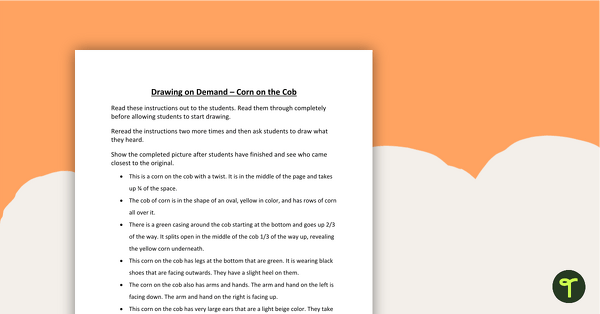
Directed Drawing for Kids - How to Draw Corn on the Cob
Use this directed drawing activity with your students to teach them how to draw corn on the cob and enhance classroom listening.
- Plus Plan
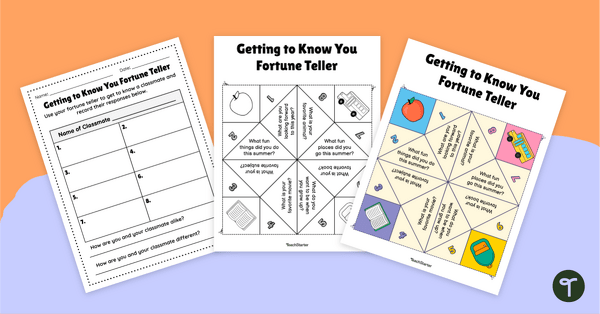
Getting to Know You Fortune Teller
Use this getting to know you paper fortune teller and summary sheet as a first day of school activity.
- Plus Plan

The Oregon Trail Board Game
Engage and excite your students to learn about traveling on the Oregon Trail with an eventful board game!
- Plus Plan
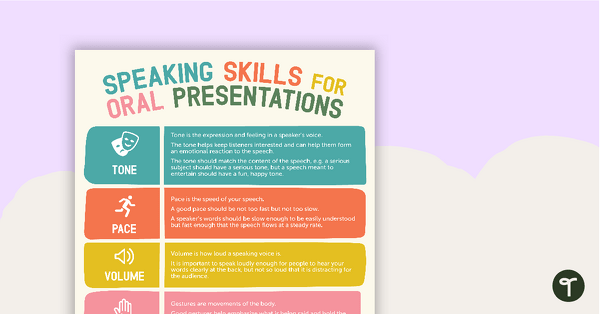
Speaking Skills for Oral Presentations Poster
A poster that explains the skills students need for a great oral presentation!
- Plus Plan
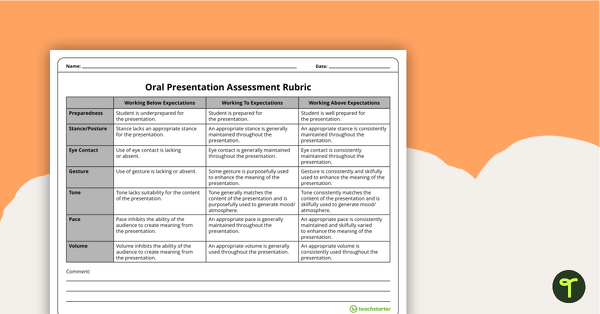
Individual Oral Presentation Assessment Rubric
Use an individual oral presentation rubric to help your students work out their presentation plans.